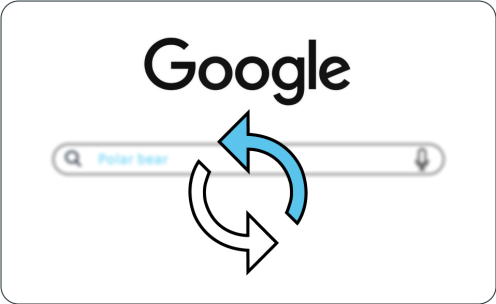Working in the field of SEO means working in a constantly evolving domain. Indeed, since its launch in 1998, Google has been regularly updating the algorithms of its search engine with the aim of increasing relevance, introducing new features, enhancing user experience, and of course, combating SEO experts who discover and leverage loopholes.
The world of SEO is therefore entitled to several dozen major updates to algorithms or filters each year because, in reality, there would be several dozen changes to the algorithm per week or even several thousand per year!

Algorithms, Filters, What Are They?
When we talk about Google updates from an SEO perspective, we often talk about algorithms, but also sometimes about filters. But what are the differences between these two terms?
Google and Its Algorithms
The plural should be used when referring to Google’s algorithms, as Google’s search and response engine is powered not by one but by a multitude of algorithms. Indeed, there are several algorithms that work together to provide the best possible results to Internet users. Among these are algorithms related to the popularity received by links (the original PageRank, which has evolved significantly and is now quite different), as well as algorithms on natural language processing like BERT and those on the use of artificial intelligence and Machine Learning like RankBrain.
During Google updates, sometimes entire algorithms evolve, or even a new algorithm comes into play, which varies Google’s results in the SERPs.
Algorithmic Filters
To be well differentiated from algorithms, filters are, in fact, an additional layer that is added to Google’s classic algorithms and which will make it possible to improve the overall quality of the results or to fight against certain types of SPAM that we owe to SEO experts.
The filters are therefore added and they should normally be updated regularly by Google so that penalised sites come out of them. Among Google’s biggest algorithmic filters are the Panda, Penguin or Pigeon filters.
The Major Google Updates of 2024
The beginning of 2024 was relatively calm, but starting in March, Google launched two major updates and implemented the INP.
March 12, 2024: Implementation of the INP
The Interaction to Next Page, i.e. the new Core Web Vitals, which replaces the FID and is responsible for checking the overall responsiveness of a web page, has therefore officially replaced the Core Web Vitals after an experimental phase of one year.
March 5, 2024: March 2024 Core Update
This update is still ongoing and it aims to provide the results that best match the user’s intent through a combination of signals. The Core Update should reduce the amount of content that is not very interesting for Internet users.
March 5, 2024: March 2024 Google Spam Update
The update lasted about 2 weeks, and it mainly affected three types of SPAM:
- Content created only to attract clicks and which does not add value to users. This is often AI-generated content without human review or poor quality spun content.
- Abusive third-party content, i.e. sites that publish content from other sites or sources in order to strengthen their notoriety.
- Technical SEO parasite, this is a technique that consists of promoting your content on high notoriety or traffic sites often thanks to a backlink.
The Major Google Updates of 2023
Since the beginning of the year, we have seen several important updates, including Core Updates and Helpful Content.
February 21, 2023: February 2023 Product Reviews Update
Google continues the updates on product reviews by applying it to more languages, including French, but also English, German, Spanish, Italian, Vietnamese, Indonesian, Russian, Dutch, Portuguese or Polish. This update mainly concerns sites with comparisons or product tests.
March 15, 2023: March 2023 Core Update
The update to the core of Google’s algorithm took place from March 15, 2023, until March 28 or 29. As is often the case, this is a significant update to the algorithms, but there is little to no detail provided, other than the goal is to enhance the relevance and quality of results for Internet users.
April 25, 2023: April 2023 Reviews Update
The name of this update is different because it replaces the previous Product reviews because it will now apply to all tests, comparisons, tops (lists) and reviews whether it is products, services, destinations, companies, games or movies.
August 22, 2023: August Core Update
At the end of August, and for about two weeks, Google launched a major Core Update. The objective of this type of update is to improve the quality of Google’s results.
September 14, 2023: Helpful Content
The algorithm launched last year by Google will penalise sites that publish low value-added content on their sites. This type of content will impact the positioning of the page, but also of the entire site. The update should be applied by the end of September.
October 4, 2023: Spam Update
This update allows the spam detection systems to be applied to all languages including French and to all types of spam such as hacking, cloaking, automatic spam, etc.
October 5, 2023: October Core Update
Only a few weeks after its August Core Update, Google releases a version for October with always the aim of improving relevance and best meeting the user’s intent.
November 2, 2023: October Core Update
With this new update, Google makes this period the one with the most changes to the algorithm or filter in such a short time. Again, it is a Core Update that aims to improve the quality and relevance of the results. It should last 2 weeks.
The Major Google Updates of 2022
The year 2022 was marked by several major updates.
February 22, 2022: Page Experience Update Desktop
In June and July 2021, Google launched its Page Experience Update on Mobile. The objective of this update is for sites to improve the user experience by respecting the Core Web Vitals (LCP, CLS and FID).
In early 2022, this algorithm is therefore applied to the Desktop versions of a site. It is therefore also necessary to respect the Core Web Vitals on a website to pass the Page Experience Update.
March 23, 2022: Product Review Update
This Google update took several weeks to roll out. Its goal is to improve the relevance of pages talking about products and to highlight pages with reviews, tests or comparisons of products, rather than simple product pages with standardised information or technical sheets.
May 25, 2022: May 2022 Core Update
This Core Update, as always, is an update to the core of Google’s algorithm, which aims to improve the relevance of Google’s results. For the May version, Google did not give more information on the subject.
July 27: July Product Reviews Update
New update like the previous one in March, still affects product pages and highlights real reviews, comparisons or tests.
August 22, 2022: Helpful Content Update in English
The Helpful Content Update, also called HCU, aims to favour sites with quality content that is useful for users. The objective is therefore, to penalise sites creating low-quality content for search engines. This first version was deployed from 08/25/2022 to 09/09/2022 and it only concerned the English language. This algorithm can penalise the entire site, even good pages.
September 12, 2022: September Core Update
Around mid-September Google launches a Core Update which will impact sites a little less significantly than the previous update. As often, there is little information on this subject.
September 20, 2022: September Product Review Update
Google continues its Product Review Update with this late September update. It often affects sites with reviews.
October 14, 2022: Site Names Update
This is an update that allows Google to display website names on Google Mobile. This update applies to German, English, French and Japanese.
October 19, 2022: October 2022 Spam Update
This is an improvement to its spam algorithm in search results thanks to an update to SpamBrain. The objective is as often to improve the quality of results for Internet users.
December 5, 2022: Helpful Content Update All Languages
The major update on content, which only concerned the English language, was applied to all languages from December 2022. The objective is still to favour good quality content and to penalise low quality content made for the search engine.
December 14, 2022: December Link Spam Update
This update is one of the most important updates on the offsite part. Google has therefore improved its method of combating link spam thanks to its AI-based spam prevention system, SpamBrain. As is often the case, it’s challenging to pinpoint exactly what Google penalises, but there are indications that Google might be targeting anchors anew and possibly also links with dofollow attributes.











